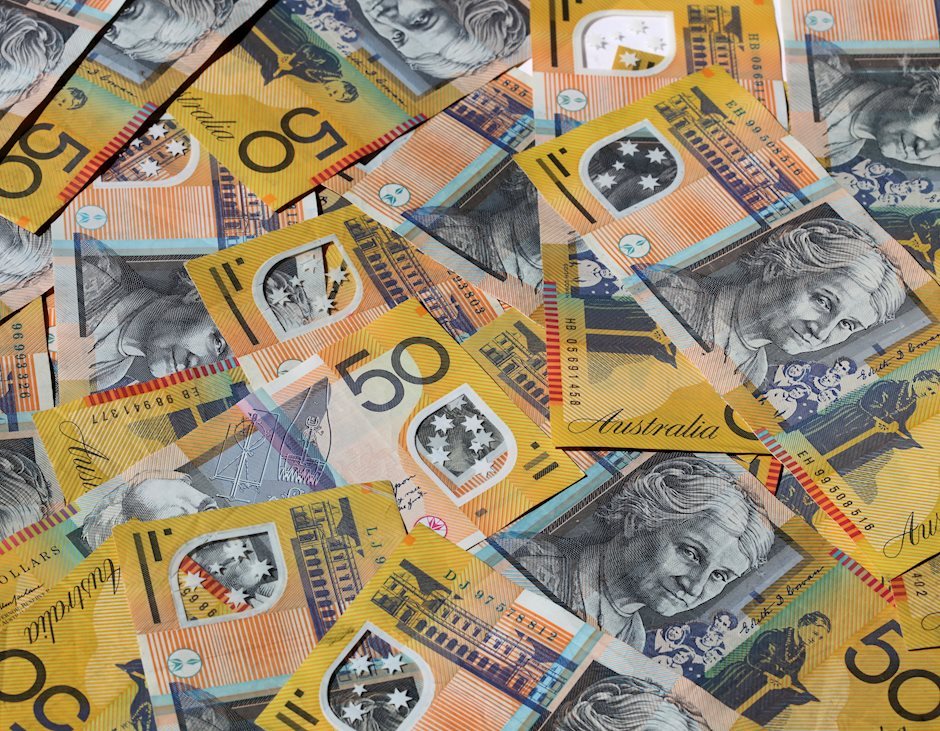AUD/USD clings to gains near 0.6640 as US Dollar dips on firm Fed rate-cut bets
- AUD/USD grips gains near 0.6640 amid sluggish US Dollar.
- The Fed seems prepared to begin reducing interest rates from September.
- Upbeat Aussie Employment adds to evidence that price pressures could remain sticky.

The AUD/USD pair holds onto gains near a three-week high of 0.6640 in Friday’s European session. The Aussie asset exhibits strength as the US Dollar (USD) struggles to hold recovery from a fresh 10-day low on Thursday, which was driven by upbeat United States (US) Retail Sales data for July and lower-than-expected Initial Jobless Claims for the week ending August 9.
The US Dollar Index (DXY), which tracks the Greenback’s value against six major currencies, edges lower to near 102.85.
Data on Thursday showed that US Retail Sales grew at a robust pace of 1% from the estimates of 0.3% after contracting in June. Meanwhile, the number of Americans filing for unemployment benefits for the first time was lower at 227K than estimates of 235K and the prior release of 234K.
The market sentiment remains firm as investors’ confidence in the Federal Reserve (Fed) to begin reducing interest rates from the September meeting remains intact. S&P 500 futures have posted decent gains in the European session, exhibiting a strong risk appetite of investors. 10-year US Treasury yields slump to near 3.91%.
Meanwhile, the Australian Dollar (AUD) performs strongly amid worries that the Reserve Bank of Australia (RBA) could tighten its monetary policy further. Upbeat Aussie Employment data, released on Thursday, added to evidence that price pressures could remain persistent. The data showed that fresh payrolls were higher at 58.2K, compared with estimates of 20K and the prior release of 52.3K.
Australian Dollar FAQs
One of the most significant factors for the Australian Dollar (AUD) is the level of interest rates set by the Reserve Bank of Australia (RBA). Because Australia is a resource-rich country another key driver is the price of its biggest export, Iron Ore. The health of the Chinese economy, its largest trading partner, is a factor, as well as inflation in Australia, its growth rate and Trade Balance. Market sentiment – whether investors are taking on more risky assets (risk-on) or seeking safe-havens (risk-off) – is also a factor, with risk-on positive for AUD.
The Reserve Bank of Australia (RBA) influences the Australian Dollar (AUD) by setting the level of interest rates that Australian banks can lend to each other. This influences the level of interest rates in the economy as a whole. The main goal of the RBA is to maintain a stable inflation rate of 2-3% by adjusting interest rates up or down. Relatively high interest rates compared to other major central banks support the AUD, and the opposite for relatively low. The RBA can also use quantitative easing and tightening to influence credit conditions, with the former AUD-negative and the latter AUD-positive.
China is Australia’s largest trading partner so the health of the Chinese economy is a major influence on the value of the Australian Dollar (AUD). When the Chinese economy is doing well it purchases more raw materials, goods and services from Australia, lifting demand for the AUD, and pushing up its value. The opposite is the case when the Chinese economy is not growing as fast as expected. Positive or negative surprises in Chinese growth data, therefore, often have a direct impact on the Australian Dollar and its pairs.
Iron Ore is Australia’s largest export, accounting for $118 billion a year according to data from 2021, with China as its primary destination. The price of Iron Ore, therefore, can be a driver of the Australian Dollar. Generally, if the price of Iron Ore rises, AUD also goes up, as aggregate demand for the currency increases. The opposite is the case if the price of Iron Ore falls. Higher Iron Ore prices also tend to result in a greater likelihood of a positive Trade Balance for Australia, which is also positive of the AUD.
The Trade Balance, which is the difference between what a country earns from its exports versus what it pays for its imports, is another factor that can influence the value of the Australian Dollar. If Australia produces highly sought after exports, then its currency will gain in value purely from the surplus demand created from foreign buyers seeking to purchase its exports versus what it spends to purchase imports. Therefore, a positive net Trade Balance strengthens the AUD, with the opposite effect if the Trade Balance is negative.
Author

Sagar Dua
FXStreet
Sagar Dua is associated with the financial markets from his college days. Along with pursuing post-graduation in Commerce in 2014, he started his markets training with chart analysis.
















